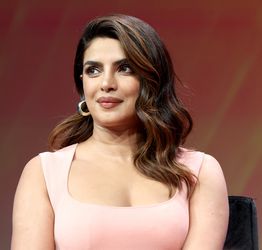When movie star Priyanka Chopra made news last week for stating in an interview that she was shamed by her stylist for not being a ‘sample size’, she knew she would have the sympathy of her many million fans. Women who are not slim and have been told they are not, are now calling out their shamers publicly and embracing their new size as a comfortable space to be in.
A few days ago, however, Chopra’s stylist Law Roach (incidentally, she did not name him) reacted to her comment saying he was misrepresented to her by her “gatekeepers” and that he adored working with the actor. The internet is divided on Chopra’s handling of the issue and Roach coming clean. Several comments suggested she wanted free clothes instead of buying them in her own size. Then, popular Instagram handle Diet Sabya posted: “We need to have this conversation. The pressure on the gworlies (sic) to be sample size. The pressure on the stylists to source clothes because not all designers want to customise. The pressure on the designers to be able to put in their money into custom samples. And the power dynamics between management-stylists-talent. Discuss.” This truly hit the nail on the head. Body positivity, fat-shaming and sample sizes are really a complex and nuanced matter.
What does it mean to be body positive? Is it the same as being overweight and obese and being okay with it? The answer is neither a yes nor a no, it is one that begs context.
Body positivity advocates acceptance of all body shapes, regardless of size, gender, colour, race or disabilities. It challenges the beauty standards set by fashion magazines, Photoshop, Instagram filters, and obviously, social conditioning. It speaks against a beauty hierarchy—that those who are slim, white, blonde, blue-eyed or tall are not to be given an unfair advantage over others. Bodies and people are diverse and all of them must be represented in an important and inclusive room of people. American fashion shows, as well as those in Europe now, must have enough Black, Asian and transgender models to garner good reviews and sales. Much of this movement is driven by consumers, social media and opinion writers, and hence the change.
Several activists, especially in the US, find that body positivity is an extension of the Fat Acceptance Movement of the 1960s, which was aimed at removing the social stigma around obesity. This has received much backlash among health professionals who call it a ‘denial of science’, as obesity is known to cause heart disease, diabetes and hypertension, among other medical conditions. But newer body positivity activists believe that their definitions encompass a diverse range of acceptances—including age, body hair, menstruation, physical disabilities and trans-sexual bodies. When we speak of being body positive today, all of these must be given equal attention.
The fashion world has often confused and contradictory notions on body positivity. Wendell Rodricks refused to call it a ‘Large’ size and would call it ‘Voluptuous’ instead. Today, designers’ campaigns include a fuller model, but their stores still charge extra for ‘Large’ size clothing. Fair & Lovely was finally forced to rename itself to Glow & Lovely. Dove soap’s advertisements for ‘Real Beauty’ feature touched-up models. While Priyanka Chopra has famously had plastic surgery and touches up all her photographs.
We must come to accept that the pursuit of beauty is human, never mind one’s size, shape, colour or gender. Beauty is self-care, beauty is grooming, beauty is style, beauty is interesting clothing.
Beauty is effort.
@namratazakaria


